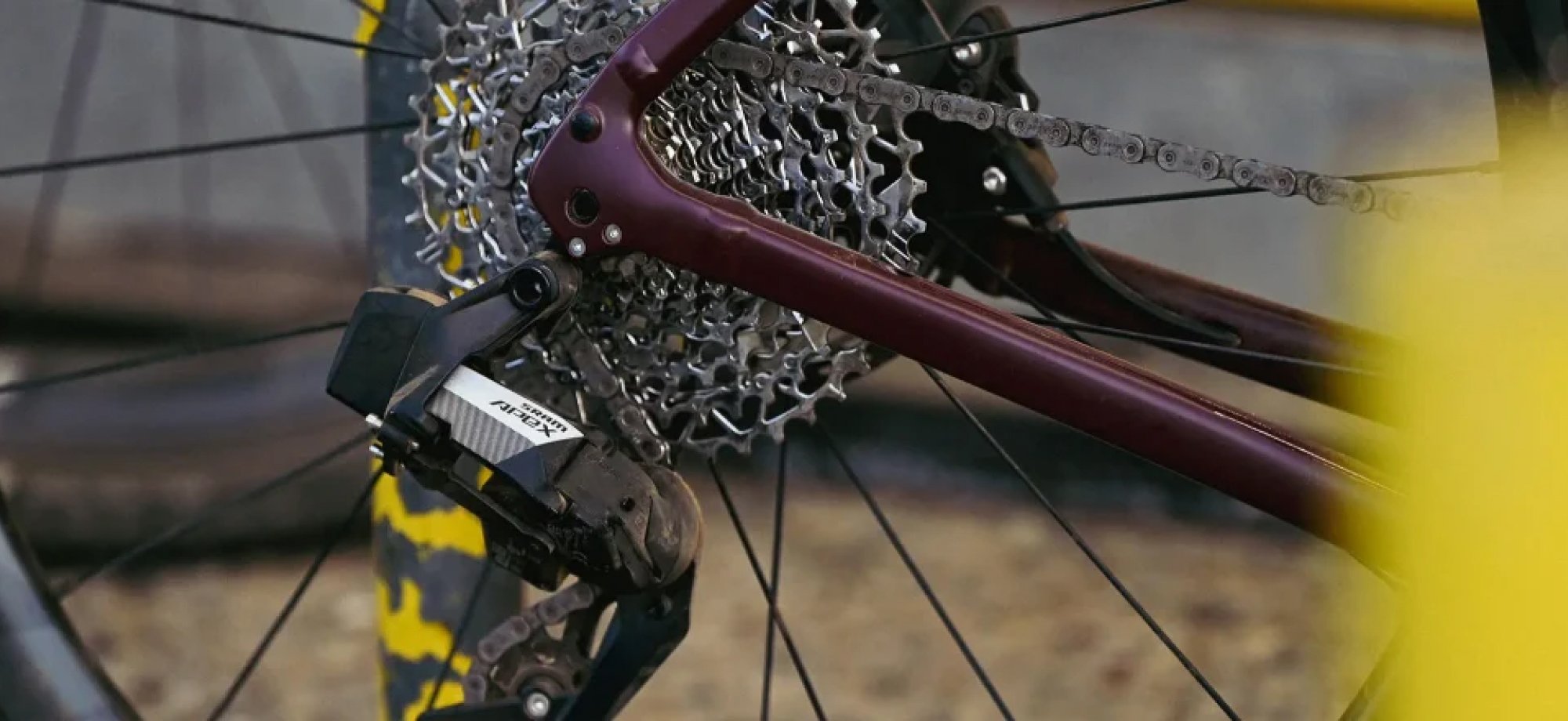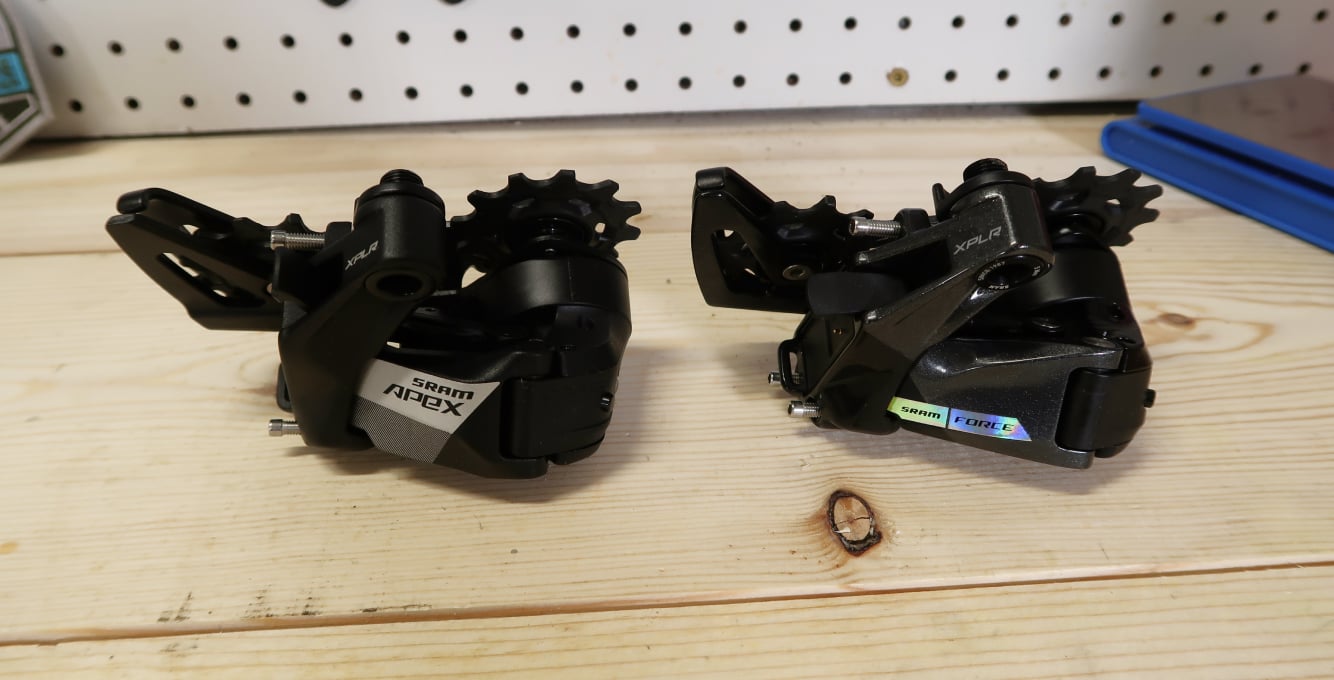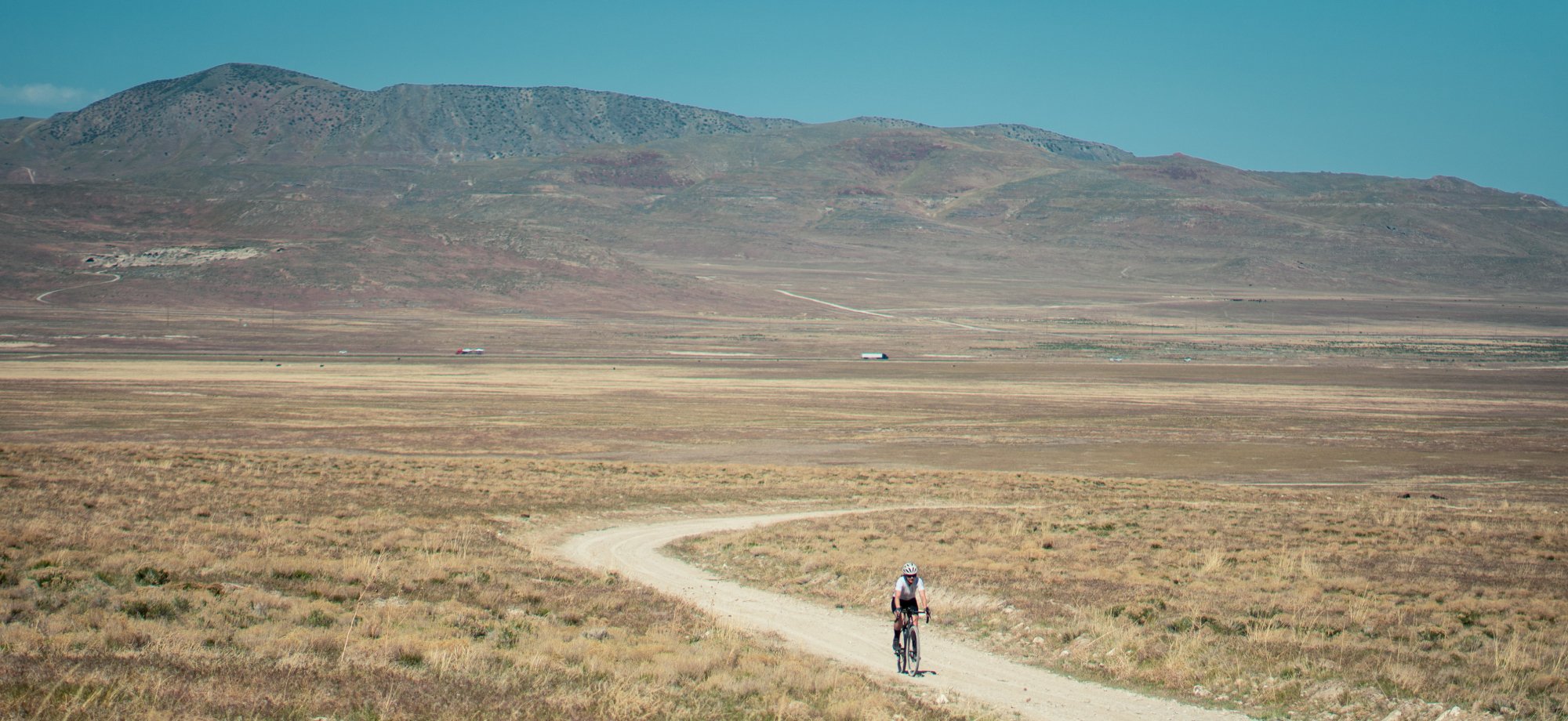SRAM AXS XPLR Gravel Groupset Weight Guide
We weighed all the AXS XPLR components so you can mix and match to your heart’s content.

SRAM’s latest generation of electronic shifting is now available in four tiers starting at the top with Red and going all the way down to Apex, the most affordable electronic groupset yet. As with all SRAM AXS parts, the components communicate wirelessly and can be easily mixed and matched. Of the four groupset tiers, SRAM claims that the lower three, Force, Rival, and Apex, all work equally well in terms of shifting and braking performance. So, what’s the difference between them? It really just comes down to weight and appearance. To help you select the right components for your bike, we’ve weighed all three of these SRAM AXS XPLR gravel groupsets to help you make a comparison between them.
Shift Levers & Brake Calipers



The control center of the bicycle, a good set of shifters is essential; however, when it comes to SRAM AXS, there is very little difference between Force, Rival, and Apex. They all work equally well and are built around the same hood shape. The Apex shifters are missing the brake pad contact point adjustment option that the others have, but all three still offer adjustable brake lever reach. When we weighed the pre-bled shifter and brake caliper setups, there was only a 12g difference between Force and Apex. At $350 per Force shifter, the cost per gram saved ratio is over $10 per gram to upgrade from either Apex or Rival – a very steep price. So, when it comes to the shifters, save money and go with Apex – so long as you are okay with the look of them.
Wide Crankset



To keep it simple, we weighed all three tiers of the AXS XPLR 1x Wide crankset with a 40 tooth chainring and 170mm crank arms. For other sizes, you should be able to guesstimate what the resulting weight would be. In the AXS XPLR series, the crankset provides a great opportunity to shave some grams without too much added cost. Jumping up to a Force crankset may cost nearly double the price of Rival, but it cuts 96g at a cost per gram saved price of $1.41 – not super cheap, but still relatively inexpensive compared to some of the other AXS components. If you have a full Apex XPLR drivetrain, upgrading the crankset to Force is an obvious first step on the path to cutting weight.
XPLR Cassette



With AXS XPLR cassettes, there is a notable outlier – the Apex cassette (PG-1231). This cassette is designed for a standard HG-style freehub, unlike the Force and Rival cassettes (which use SRAM XDR). So, while it may appear that the Apex cassette is only negligibly heavier than Rival, it is worth considering that the freehub will also contribute to your overall weight. XDR hubs tend to be a little lighter than HG hubs, but it’s not always true. If you already have a HG wheelset, the Apex cassette might allow you to save some cash and avoid buying a new freehub or an entire wheelset. The limitations of an HG prevent the use of smaller cogs so the range on Apex is 11-44T rather than 10-44T. For most riders, this is not a big issue.
XPLR Derailleur

Not pictured: Rival XPLR Derailleur: 331g
Right: Force XPLR Derailleur: 308g
SRAM claims that there is no difference in derailleur performance between Force, Rival, and Apex. The weight penalty from Force to Apex is only 15g (approximately the weight of three grapes). Hardly worth an extra $100 in our opinion. And for some weird reason, the Apex derailleur is actually lighter than the Rival one!? So, when it comes down to it, the only reason to go with a Force derailleur over Apex or Rival is for the appearance. And yes, we’ll admit it – that unicorn grey finish is pretty snazzy looking.


Flattop Chain

Center Rival Flattop Chain: 271g (120 Links)
Right: Force Flattop Chain: 259g (114 Links)
Once again, there does not appear to be any significant difference between the chains. The Force chain is about 10 grams lighter than the others, but that seems to be mostly due to its shorter length – which is totally irrelevant since you are going to reduce the length anyways. So, the Apex chain is your best bet. Though, if you like bling, the SRAM Red Flattop chain comes in rainbow. While it’s not cheap, it does shave off some grams too.

Depending on your trip, it may be worth shipping your bike using a carrier. This works best if you have an address lined up where you can ship the bike to. Services like bikeflights.com can be very helpful when it comes to purchasing postage and boxing up your bike.
Mix & Match
Now that you’ve got all the info, it’s time to pick and choose. Below is our selection to get the best bang for your buck. It’s all Apex except for the crankset and the cassette. In the end it saves $400 over Force and only weighs 49 grams more. Sounds like a good deal to us!
| Part # | Series | Part Type | MSRP | Actual Weight (g) | Cost per gram |
|---|---|---|---|---|---|
| 00.2518.060.013 | Apex AXS | Flattop Chain | $30 | 269 | $0.11 |
| 00.7518.175.000 | Apex AXS | Rear Derailleur | $275 | 323 | $0.85 |
| 00.7918.261.001 | Apex AXS | Shifter + Caliper (x2) | $220 | 424 | $0.52 |
| 00.6118.665.008 | Force AXS D2 | Wide Crankset | $275 | 603 | $0.46 |
| 00.2418.118.000 | Force AXS D2 | XPLR Cassette XG-1271 (XDR) | $222 | 379 | $0.59 |
| Totals: | $1,242 | 2422 | $0.51 |
All the data in one place
Because we know you like to crunch numbers, here are all the weights and prices in one spot!
| Part # | Series | Part Type | MSRP | Actual Weight (g) | Cost per gram | Cost Difference (From Apex) | Grams Saved (From Apex) | Cost Per Gram Saved (From Apex) | Cost Difference (From Rival) | Grams Saved (From Rival) | Cost Per Gram Saved (From Rival) |
|---|---|---|---|---|---|---|---|---|---|---|---|
| 00.2518.060.013 | Apex AXS | Flattop Chain (120 Links) | $30 | 269 | $0.11 | ||||||
| 00.2518.044.011 | Rival AXS | Flattop Chain (120 Links) | $40 | 271 | $0.15 | $10 | -2 | -$5.00 | |||
| 00.2518.038.000 | Force AXS D2 | Flattop Chain (114 Links) | $50 | 259 | $0.19 | $20 | 10 | $2.00 | $10 | 12 | $0.83 |
| 00.7518.175.000 | Apex AXS | Rear Derailleur | $275 | 323 | $0.85 | ||||||
| 00.7518.159.000 | Rival AXS | Rear Derailleur | $300 | 331 | $0.91 | $25 | -8 | -$3.13 | |||
| 00.7518.174.000 | Force AXS D2 | Rear Derailleur | $377 | 308 | $1.22 | $102 | 15 | $6.80 | 77.00 | -23.00 | -$3.35 |
| 00.7918.261.001 | Apex AXS | Shifter + Caliper (Right/Rear) | $220 | 424 | $0.52 | ||||||
| 00.7018.443.003 | Rival AXS | Shifter + Caliper (Right/Rear) | $260 | 421 | $0.62 | $40 | 3 | $13.33 | |||
| 00.7918.213.001 | Force AXS D2 | Shifter + Caliper (Right/Rear) | $350 | 412 | $0.85 | $130 | 12 | $10.83 | $90 | 9 | $10.00 |
| 00.6118.672.007 | Apex AXS | Wide Crankset | $110 | 704 | $0.16 | ||||||
| 00.6118.612.001 | Rival AXS | Wide Crankset | $140 | 699 | $0.20 | $30 | 5 | $6 | |||
| 00.6118.665.008 | Force AXS D2 | Wide Crankset | $275 | 603 | $0.46 | $165 | 101 | $1.63 | $135 | 96 | $1.41 |
| 00.2418.132.001 | Apex AXS | XPLR Cassette PG-1231 (HG) | $124 | 426 | $0.29 | ||||||
| 00.2418.119.000 | Rival AXS | XPLR Cassette XG-1251 (XDR) | $158 | 414 | $0.38 | $25 | 8 | $3 | |||
| 00.2418.118.000 | Force AXS D2 | XPLR Cassette XG-1271 (XDR) | $222 | 379 | $0.59 | $98 | 47 | $2 | $64 | 35 | $1.83 |
| - | Apex AXS | Groupset* | $979 | 2570 | $0.38 | ||||||
| - | Rival AXS | Groupset* | $1,158 | 2557 | $0.45 | $179 | 13 | $14 | |||
| - | Force AXS D2 | Groupset* | $1,624 | 2373 | $0.68 | $645 | 197 | $3 | $466 | 184 | $2.53 |
*The weight of the SRAM AXS battery is not included in the total groupset weight. Add 26g for the battery.


